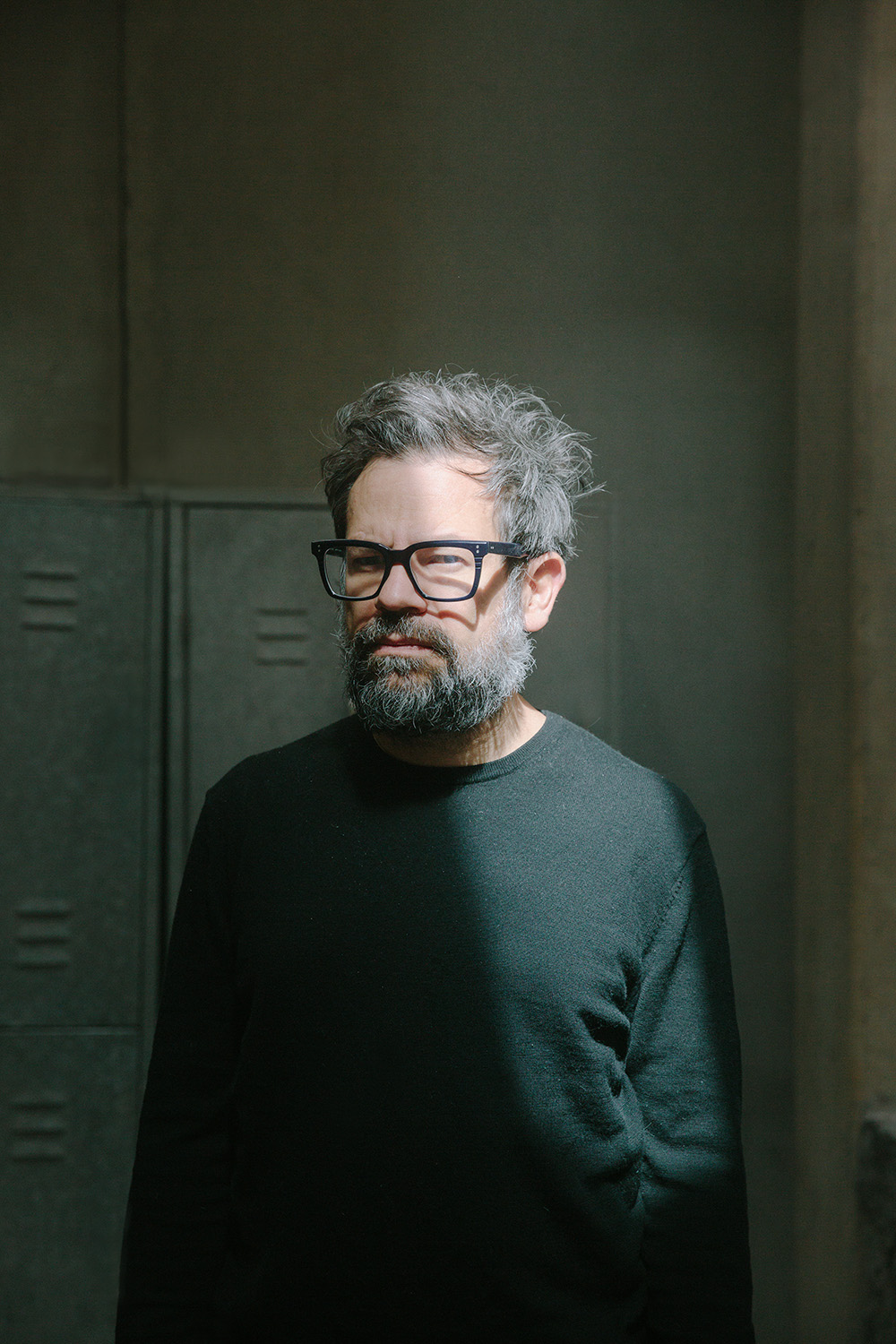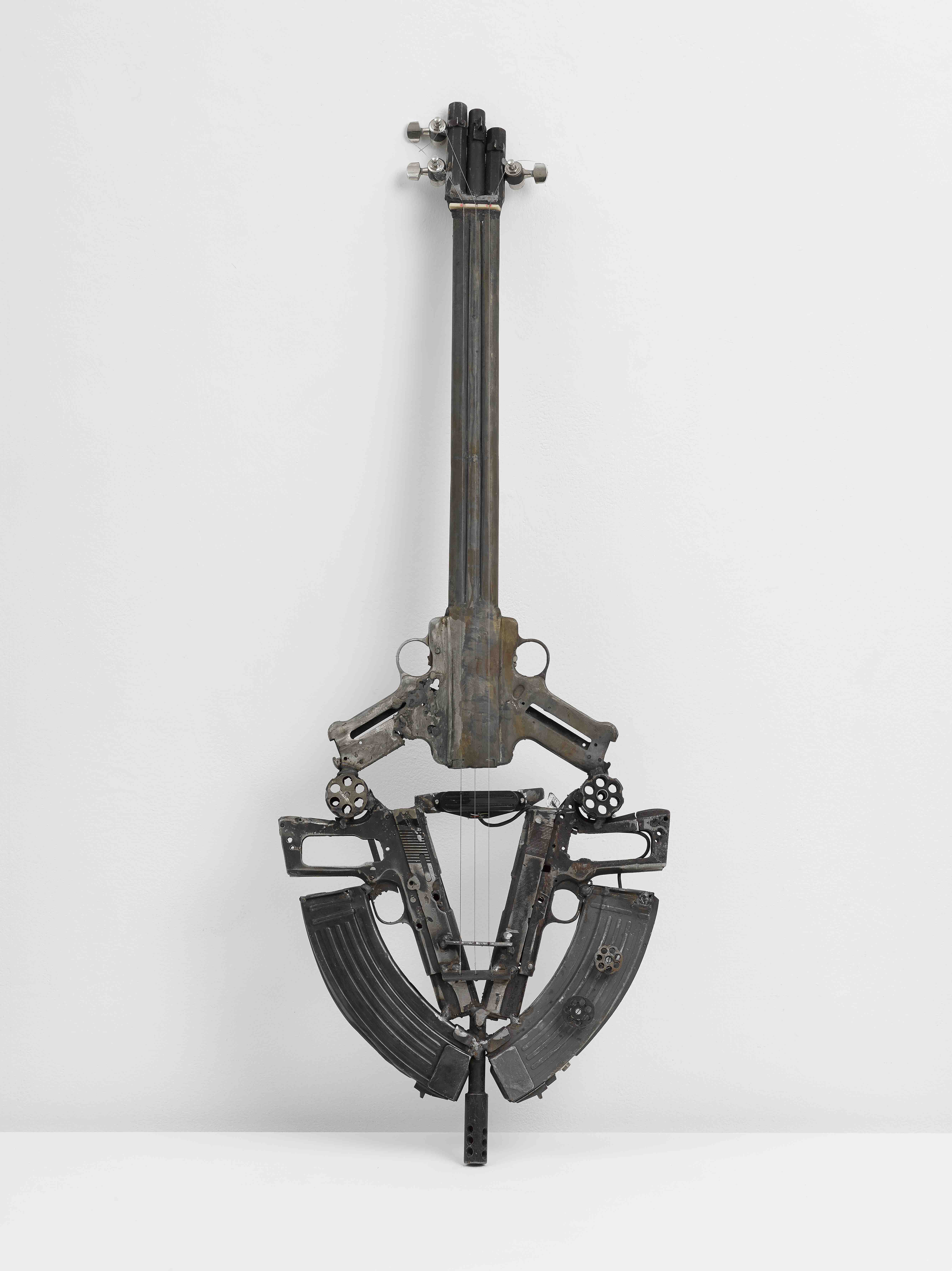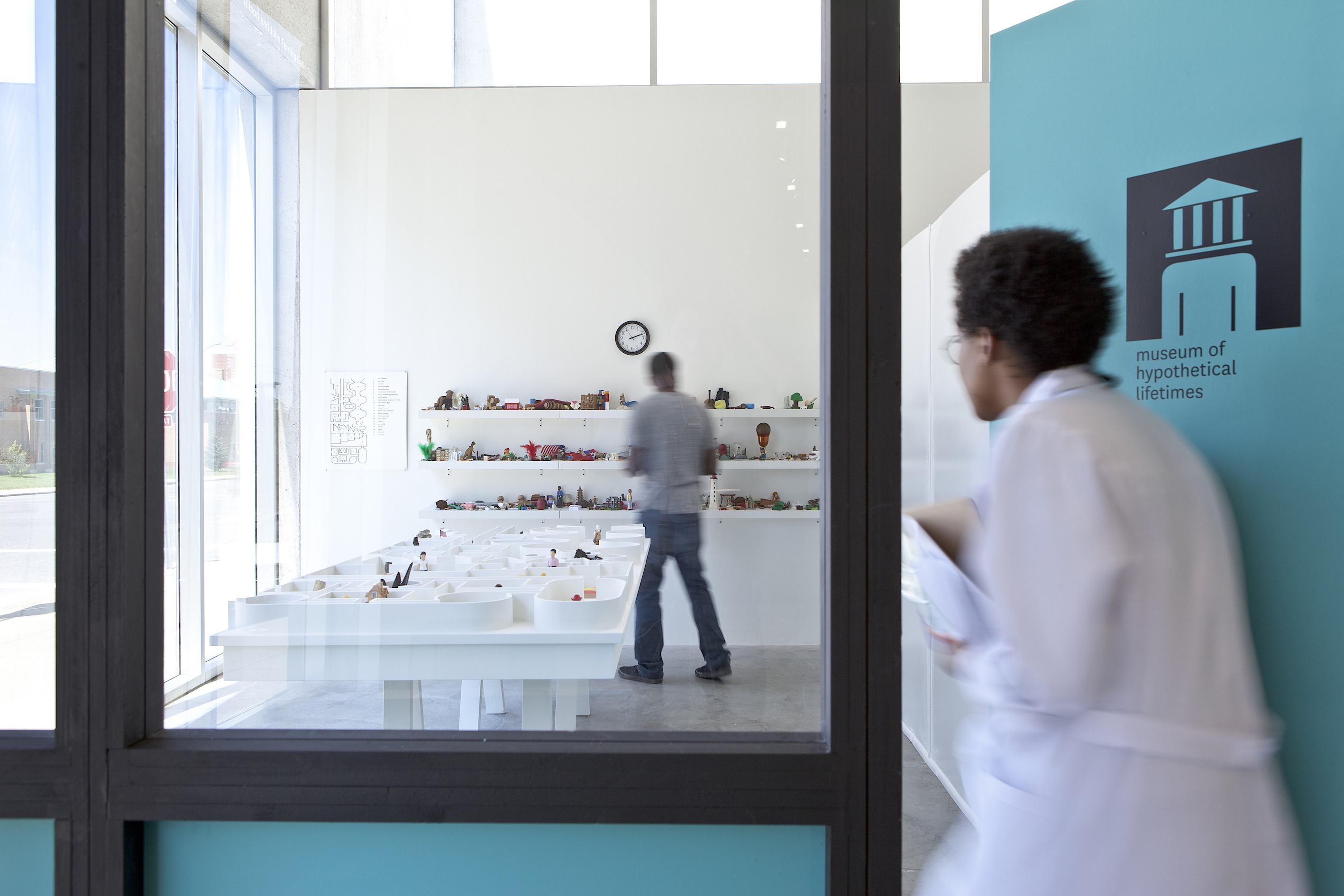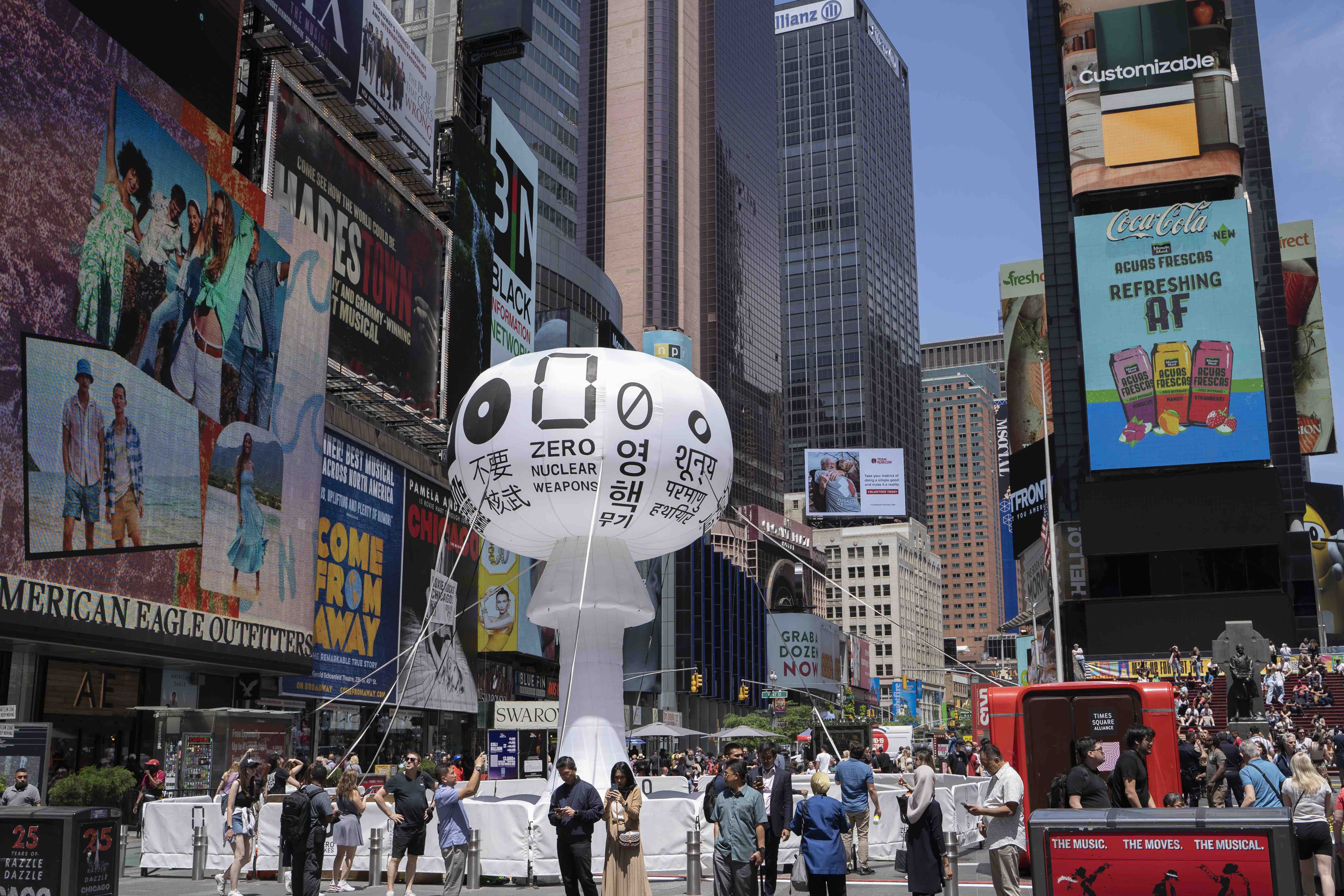Pedro Reyes on,
Creating Art for Social Change,
Social Sculpture, Turning donated Guns into Shovels & Musical Instruments,
Showcasing Art against Nuclear Warfare,
AI, Art and Psychology,
Bringing Communities Together and The Power of Art & People’s Voices

Pedro Reyes; Picture courtesy of Pedro Reyes
Pedro Reyes’ work and projects are important and vital, considerate and meaningful, they go beyond art and beyond activism, reaching out to people’s conscious, soul, and empathy. His projects, workshops and works of art aim to restore hope, striving to seal wounds through the realm of art, projects acting as plasters over fractured hearts, calling out for people to come together, connect and heal, for policies to transform in thoughtfulness.
Projects such as ‘Palas por Pistolas’ and ‘Disarm’ were conceived by the artist to ensure donated guns in Mexico reincarnate into a new life of either shovels to plant trees or instruments, a mechanized orchestra playing live musical performances.
‘Sanatorium’—a temporary therapeutic clinic and ‘People’s United Nations’—a gathering regarding politics, peace and humanitarianism, held with civil society rather than diplomats, engage communities to connect through discussion, theatre and conflict resolution activities, instead of what conventional therapy or usual diplomacy may offer, looking towards a grassroots movement rather than a top down approach.
Pedro Reyes’ art address socio-political issues, monumental stone carvings reflecting on heritage, sculptures and materials fuelling resilience and determination—an attribute found too in other works, bringing people together with the determination and dedication to change things, such as with the inflatable sculpture ‘Zero Nukes’ and the organising of ‘Artists Against The Bomb’—a collection of urgent messages calling for universal nuclear disarmament through downloadable posters, exhibitions in several cities, a book and a digital platform.
Art, sculptures, that are around us, that we encounter or create, may in this uncertain world, pave the way to see hope, when it feels like there isn’t much out there. Pedro Reyes’ projects both engaging and impactful are devoted to point the way to hope, compassion and to social reform.
When did you start to see art as a tool that could speak on social issues and bring about change?
I think that ever since the Muralists, there has always been an expectation for Mexican art to engage with political and social issues. The Muralists were from a generation that through the medium of painting were very committed to social causes and social movements.
My work arose from a moment in the 1990’s, where artists of my generation were working around more of a conceptual framework that involved an expanded idea of art, and which included performance and activities that would take in the public space. When one has a wish for art to engage with reality and to hopefully produce change, to a certain degree, the tools to bring that about won’t necessarily be found in the History of Art, it has to be nurtured from other techniques or tactics. So I started working with techniques that stemmed from the theatre, from conflict resolution group activities, from therapies, elements that came from social psychology, and where the material is the participation of other people. That dynamic has to be sculpted as a group dynamic, shaped and formed. That’s the concept of social sculpture.
And regarding that, one of your projects was 'Palas por Pistolas’, where you turned guns into shovels. How did that come about and what were its outcomes?
‘Palas por Pistolas’ is an example of a social sculpture, in the sense that there are many actors that were involved; official authorities to conduct the disarmament programme, when we placed a call out for people to bring in their guns to the City Hall, and it has to either be the police or the army who receive these weapons, then there’s the private sector who would sponsor gift cards or coupons that were given in exchange for the guns handed in, they were private philanthropists that supported this endeavour, and there’s also the population of the city who participated in the call out. It’s a combination of government, a private corporation and civil society, who all came together as a community, undertaking to see this project through.
In sculpture, the shape and material we are working with is meant to be altered, there lies the inspiration for ‘Palas por Pistolas’, a project where we melted the donated guns, turned them into shovels and then used the shovels to plant trees. It is a physical transformation of the metal, but I think of it a little bit like alchemy, because the inspiration of alchemy was also to have a spiritual and psychological transformation, and hopefully a social transformation too.
People came together when the trees were being planted, rather than reflect on the pain of the lives lost, we were planting new life. This is significant because closure is needed, but it’s not enough; closure is the omega, but then you need the alpha, you need to start a new cycle, so a tree becomes a sort of living monument as it grows, and the trees we have planted 10 years ago are now about 10 metres high. That’s the full cycle of the social sculpture, it’s a process.

Palas por Pistolas, (Guns for Shovels), 2007 - present
Picture courtesy of Pedro Reyes
‘Palas por Pistolas’ paved the way for the project ‘Disarm’, this time turning the guns into musical instruments, a mechanized orchestra played during live performances.
Were you drawn to the instrument, to it making music, as a similar feeling you had with planting the trees in ‘Palas por Pistolas’, in the sense of something new evolving that had the potentiality to live for a very long time?
The term instrumentalisation is often a derogative one, if instrumentalised then it means you are being used. I was reading about the philosopher John Dewey’s doctrine on pragmatism which was previously instrumentalism, and my hope had always been to create through an artistic environment, a sort of laboratory where prototypes can be made, with the aspiration that these prototypes would become policy, so my desire was to be instrumentalised, for the government to adopt the double action of the disarmament campaigns and the planting of trees. I was playing with the idea of the instrument, of becoming one, because your initiative is an instrument, then it means other people can use your idea, and if that happens then it’s a big compliment because they find it helpful and useful.

Disarm - turning guns into musical instruments, 2012 / 2013; Picture courtesy of Pedro Reyes
So do you think that idea of functionality is what you brought from studying architecture into your art and projects?
Certainly, in architecture you have to solve a problem, that’s perhaps one of the reasons I have expectations for art to perform a function, although I think that this is a self imposed rule, because I don’t believe that art should necessarily do so.
Artists don’t break rules, they add new ones for themselves, and one of the rules that I have imposed on myself is that for some of my projects there would be accountability and a way to create an effective outcome. To a certain degree, It’s absurd to expect art to be accountable, because art is like food for the soul. What really matters is to be drawn onto art, it shouldn’t feel like a kind of duty or responsibility, it’s more moved by emotions. However, if art wants to have a function, then it should not be prevented from doing so, art can contain that ethos.
I read somewhere that you appreciate the resilience of direct carving in stone, which was seen in your exhibition ‘Tlali’ (Earth).
Characteristics of resilience the material and sculpting possesses, is also needed to highlight the social issues you have brought out in your projects.
Carving stone, that’s more part of the other side of my practice, it’s very pleasing to have that space where I deal with the composition and material, and it doesn’t necessarily involve anyone else in the process. So from one side there’s the social practice, and then there’s this classical sculpture. Nevertheless, they do connect because often my stone carving will be an allegory.
For instance, one sculpture is a hand holding a pencil, yet the pencil is upside down, it’s as if the hand and pencil are erasing something. That sculpture is called ‘Amendment’ and it’s related to the participatory workshop ‘Amendment to the Amendment’, where participants are asked to rewrite the Second Amendment and come up with a new version of it.
We sometimes feel that whatever is written is unchangeable. One of my mentors Antanas Mockus said to me that it was necessary to allow ourselves to edit and fix our errors, the pencil acts as a metaphor for that, that as we are writing, we should be able to correct ourselves, which is something also applicable in politics and history.
I wanted to create a sculpture that was linked to the workshops. It is also an example of how these two practices relate.

Amendment, 2017; Picture courtesy of Pedro Reyes
Does that aspect of changing things, apply to what lay behind 'People’s United Nations’, for people to feel the power of their own voice?
Yes, the idea was that people could represent their country without necessarily being delegates from a government. It acted as a sort of direct diplomacy.
‘People’s United Nations’ was an alternative organisation, creating a gathering where participants could self impose a role, become a delegate, speak on behalf of their country, discuss global politics, utilise conflict resolution techniques and theatre games, and come up with their solutions to issues. It was great to be in a room with participants representing 190 countries, we almost had the full world represented.

The People’s United Nations (pUN), 2013; Picture courtesy of Pedro Reyes
Gathering people together and immersing in activities also came about with your project ‘Sanatorium’ a temporary clinic, where fusing art and psychology were at the forefront, how did ‘Sanatorium’ come about?
‘Sanatorium’ is about deprofessionalization within counselling, in the sense that one of the best ways to heal is helping others. We have this false impression that if we give our time and care to each other, we may lose energy, but it is quite the opposite.
Psychological help is often experienced individually and comes at a cost, so I was very interested in creating a system which could be framed as group therapy, with therapies that are similar to small rituals or playful games, and could be conducted safely by anyone.
For the volunteers that ran ‘Sanatorium’, it was very important to me that their job was highly rewarding. They could be running a therapy such as the museum of life— a model for an empty museum where participants have to place little objects, creating a sort of exhibition of one’s life, a self portrait made up of objects. Through this type of therapy, a volunteer will over the course of a day, hear about ten different life stories from people with very different backgrounds and ages, and this is highly gratifying for the therapist volunteers, because they are receiving much perspective on matters. Like when we think we have problems, during these type of therapeutic activities, we may then realise that there are people who have worst or different problems to ours, that kind of helps to cope with putting our owns issues into perspective, and to also perceive that no one is perfect, everyone is somehow hiding something, we are all a bunch of scared kids pretending to have our stuff together. This kind of intense exposure to the fragility of life, is a process that is full of compassion but also gives us much insight about life.
These procedures would not yield better results if conducted by someone with credentials, who for instance had studied psychology, these sessions are types of workshops that everybody can facilitate.

The Museum of Hypothetical Lifetimes part of Sanatorium project, 2011—ongoing; Picture courtesy of Pedro Reyes
Referencing what you just said on the “exposure to the fragility of life”, though on a different matter, this saying may relate to your work, ‘Zero Nukes’, a work that is set within an environment where workshops, group settings also occur, this time around an inflatable sculpture showcasing the fragility of life in relation to nuclear weapons.
It’s very hard to find a visual allegory for nuclear war, and there’s a reason why, when you are depicting a nuclear mushroom, you have to be sensitive about that, because this is a symbol of suffering, and I didn’t want for there to be any ambiguity about what the message was. So it was paramount for me to write on the inflatable the words "Zero Nukes", as there are different ways to go about nuclear disarmament. People have tried non proliferation or some would say “no more nukes”, to hold off the production of new ones, but the position that I align myself with, which is the same position as the International Physicians for the Prevention of Nuclear War, or the International Campaign to Abolish Nuclear Weapons: ICAN, is full abolition, where no one gets to have a nuclear bomb, and this is something that I echo.
What I have seen in the world of guns, is the rhetoric that what it takes to stop a bad guy with a gun, is a good guy with a gun, and that is something that is continuously fuelling the business of gun sales. So I think we have to aim for abolition, the same way that we have abolished land mines, chemical weapons, biological weapons, these are big achievements for civilisation to have got rid of these weapons of mass destruction that are designed to mass murder civilians. It is important to focus on the “zero” as a graphic universal symbol that anyone could understand, and what I did with the inflatable sculpture, was to repeatedly write in the eight languages of the nine countries that have nuclear weapons, the statement: Zero Nuclear Weapons.

Zero Nukes, Times Square, New York, inflatable sculpture, 2022; Picture courtesy of Pedro Reyes
You have taught the course ‘The Reverse Engineering of Warfare: Challenging Techno-optimism and Reimagining the Defence Sector—an Opera for the End of Times’, at the MIT Center for Art, Science & Technology; another concern in the world seems to be AI, a lot of people are worried about its rapid advancement, what are your thoughts on AI (Artificial Intelligence) and how technology is more and more integrated with art?
What we are seeing is not so much intelligence but more artificial foolishness; at least in the production of text, artificial intelligence as an algorithm is searching for words according to an existing number of patterns, which for instance could be to complete or replace a sentence and so on. It’s at a race to get to the middle of a general consensus, and that’s why it’s very dangerous, because the general consensus in many cases may be wrong and intelligence is a process that often has to do with going against a consensus that dominates.
There are a lot of paradigms in society that are extremely problematic, I think humanity will always have a certain input yet will be amused by creating machines to outsource actions and have this golem kind of love and fear relationship with, where our aspirations or anxieties can be placed.
I am personally always following what is happening in technology alongside being skeptical about it, because I am old enough to have seen a lot of fads, like two years ago when there was all this hype about NFTs, I felt that it was a fad and now it’s almost embarrassing to mention them.
Do you think art has enough power to counter the issues the world faces, wether it’s AI or extreme politics?
It’s a difficult question to answer. In the film ‘Alphaville’ by Jean-Luc Godard, a computer is interrogating the main character, and it asks something like, what is the difference between humans and machines, and the character answers ‘la poésie’—poetry.
But what does poetry have? What it may contribute, is that instead of providing a word that would most likely seem to fit in a prose, or follow a rational pattern, poetry may introduce us to a word that is precisely what wouldn’t be expected, or even to a word that would be so obvious, it may not even be considered. These aesthetic word choices have to somehow receive a confirmation that they land right, and that is something that probably only humans can do.
Yet obviously, machines will always be helpful for a number of things, such as groundwork. However, I have found that time is often lost fixing what AI has tried to achieve. What we need to understand is that technology is like a prothesis, if you use a prothesis that you don’t need, it will atrophy. If we rely too much on materials that exist in a digital space, we must be aware that everything that is digital has a very short lifespan, maybe in the present time it has a wide outreach, but if most of us try to find a file produced twenty years ago, it’s almost impossible.
What are some of the new art projects you are working on?
I am currently organising a group project, where I have invited over 100 artists to produce posters against nuclear weapons. The project is called 'Artists Against the Bomb’, we have a website (https://artistsagainstthebomb.org) with artists from all over the world who have very kindly showed their solidarity to this cause by designing posters which are also downloadable. The idea is that they can be printed locally, on site, without worrying about shipping or insurance. We currently have an exhibition in Berlin, and previously we had an exhibit in Oslo and in Copenhagen.
We have put together a book that includes nearly 200 entries with artworks against nuclear weapons. It will be presented on the 27th November at the United Nations in New York city at the same time as the conference and the meeting of state parties for the Treaty of Prohibition of Nuclear Weapons. We are holding a parallel exhibition at the Judd Foundation (https://juddfoundation.org/programs/artists-against-the-bomb/), where the book and the posters will be presented. It’s a nice project because every artist that I have invited, has to nominate another two artists.

Artists Against The Bomb, https://artistsagainstthebomb.org,
Three artwork posters by Santiago Sierra, Magdalena Abakanowicz, Harrell Fletcher
Picture courtesy of Pedro Reyes
Reyes (b. 1972, Mexico City) lives and works in Mexico City. He studied architecture at the Ibero-American University in Mexico City. Solo exhibitions have been held with SITE Santa Fe, NM, USA (2023); MARTa Herford, Herford, Germany (2022); Museum of Contemporary Art of Monterrey, Monterrey, Mexico (2022); MAAT, Lisbon, Portugal (2021); Museum Tinguely, Basel, Switzerland (2020); SCAD, Georgia, USA (2019); Creative Time, New York, USA (2016); Dallas Contemporary, TX, USA (2016); La Tallera, Cuernavaca, Mexico (2016); Hammer Museum, Los Angeles, CA, USA (2015); ICA, Miami, FL, USA (2014); The Power Plant, Toronto, Canada (2014); Walker Art Center, Minneapolis, MN, USA (2011); Guggenheim Museum, New York, NY, USA (2011); CCA Kitakyushu, Japan (2009); Bass Museum, Miami, FL, USA (2008;) and San Francisco Art Institute, CA, USA (2008). Reyes has participated in group exhibitions at the 21st Century Museum of Contemporary Art, Kanazawa, Japan (2015); The National Museum of XXI Century Arts (MAXXI), Rome (2015); Beijing Biennale, China (2014); Whitechapel Gallery, London, UK (2013); dOCUMENTA (13), Kassel, Germany (2012); Liverpool Biennial, UK (2012); Gwangju Biennial, South Korea (2012); Lyon Biennale, France (2009); and the 50th Venice Biennale, Italy (2003). In Fall 2016, Reyes served as the inaugural Dasha Zhukova Distinguished Visiting Artist at MIT Center for Art, Science & Technology (CAST) at Massachusetts Institute of Technology in Cambridge, Massachusetts.
http://www.pedroreyes.net https://www.instagram.com/_pedro_reyes_/
https://artistsagainstthebomb.org https://www.instagram.com/artistsagainstthebomb/
All Pictures Courtesy and Copyright of © Pedro Reyes
